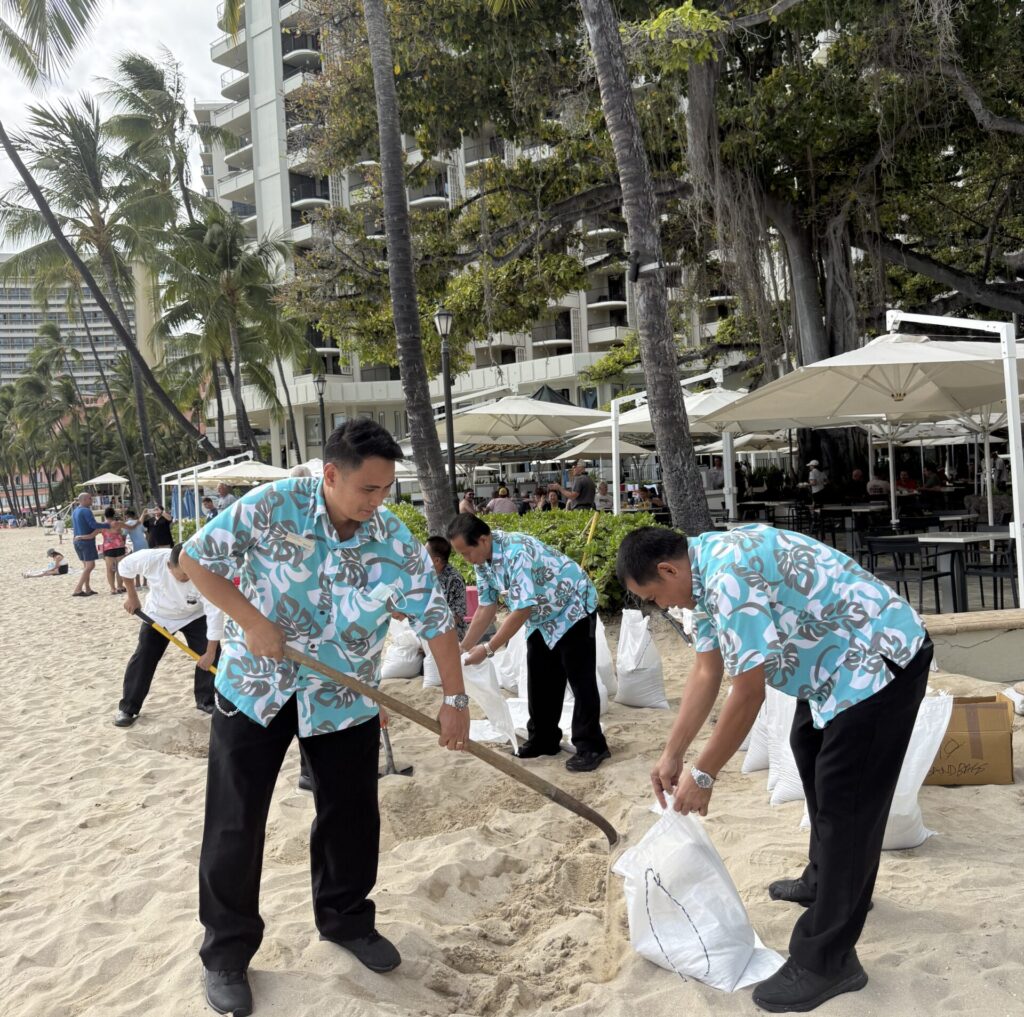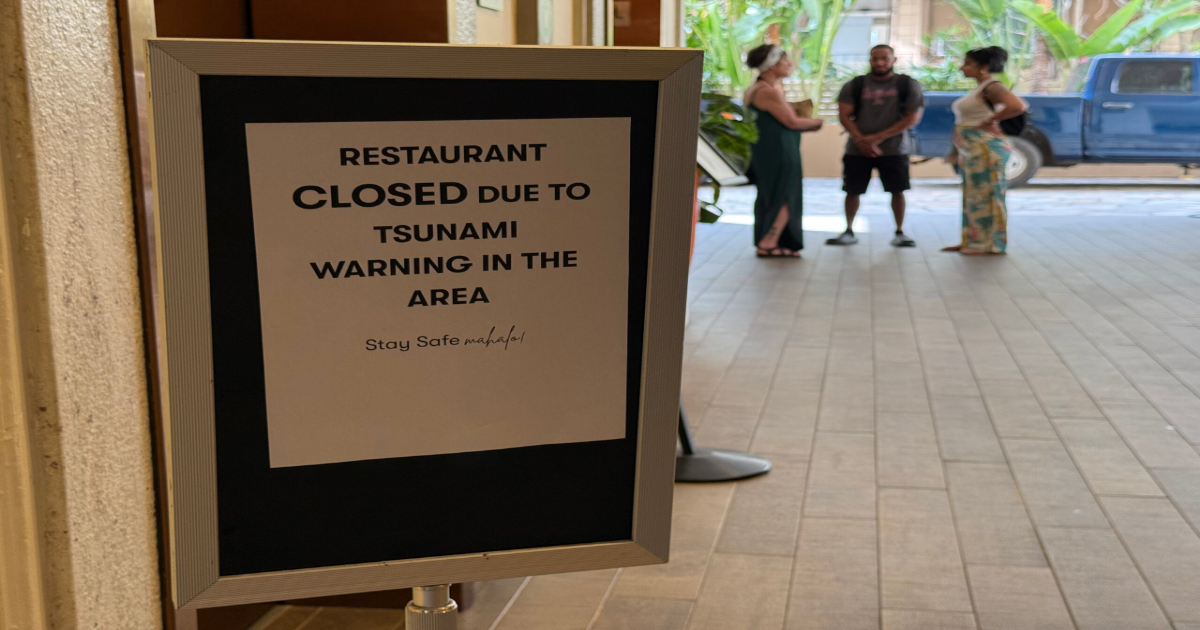Traffic is gridlocked and sirens blared after a tsunami is generated by a massive earthquake off Russia.
This story will be updated.
Sirens blared across coastal areas of Hawaiʻi, cars jammed island roads and businesses closed early as the state issued a tsunami warning following a magnitude-8.8 earthquake off the eastern coast of Russia.
The Pacific Tsunami Warning Center warned that a tsunami had been generated and the first waves could hit Hawaiian shores Tuesday evening, with the potential to cause damage along the coastlines of all islands. Coastal residents were urged to move inland and to higher ground.
Waves of about 3 to 10 feet above tide level were possible along some coastal areas of Hawaiʻi, Chile, Japan and the Solomon Islands, it said.
“Urgent action should be taken to protect lives and property,” the warning stated.
Gov. Josh Green said at a press conference about 5 p.m. that officials would have a better idea of the wave height for Hawaiʻi after it passed Midway Island which was expected to happen soon.

Evacuation centers were quickly established across the islands. Warnings also sounded in Alaska and other coasts south toward New Zealand, The Associated Press reported.
Some flights to and from Hawaiʻi were canceled or delayed.
In Waikīkī, the beaches were empty and hotel workers were helping fill sandbags to try to stave off any rising waters.
Traffic was already bumper to bumper at about 3:30 p.m. around Ala Moana Shopping Center as people tried to move out of the evacuation zone, many converging on the mall’s parking garage, despite the fact that it’s in the evacuation zone.
The Queen’s Medical Center in downtown Honolulu closed its doors, although the emergency department remained open.
Honolulu-based hotel consultant Keith Vieira said hotels usually have established policies and procedures for tsunami warnings and would work with state civil defense officials to decide when to implement the plans.
Larger hotels generally do not have to completely evacuate, said Vieira, former executive vice president of operations for Starwood Hotels & Resorts Pacific region.
“We just put people on higher floors,” he said.
Meanwhile, officials opened evacuation bypass routes. On the west side of Oʻahu, the U.S. Army and U.S. Navy said they had opened Kolekole Pass from Lualualei Naval Road to Lyman Road. The route is accessible for emergency use and may be used by residents as an alternate evacuation path.
Motorists were advised to use extreme caution and follow all posted signs and instructions from military and emergency personnel. “The pass will remain open until the all-clear is given by emergency management authorities,” according to a press release.
The Maui Beach Hotel in Kahului was among many facilities being evacuated, with managers going door-to-door and placing a small red circle sticker on the doors to indicate they’ve let the guests in that room know. They were also checking that guests have cars to leave, and provided a map downstairs to tell them where to go.
Big Island police, meanwhile, blocked off entrances to downtown Hilo, where some older sections are in the inundation zone.
On Kauaʻi, residents were fleeing in droves on the lone road out of the island’s North Shore. Evacuees faced traffic jams, aggressive driving, long lines at gas stations and grocery stores closing down early. The Kauaʻi Police Department also blocked vehicles from entering Hanalei, the low-lying coastal town at highest risk for tsunami flooding on the Garden Island.
